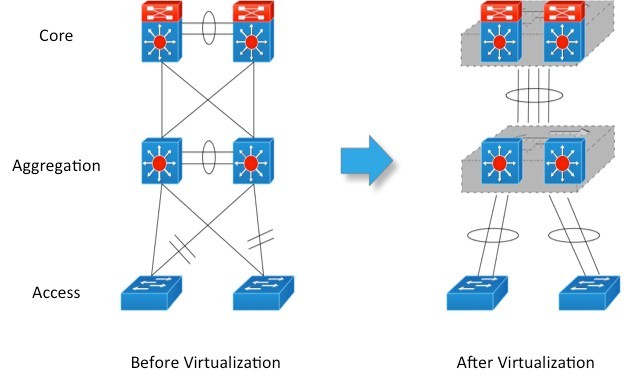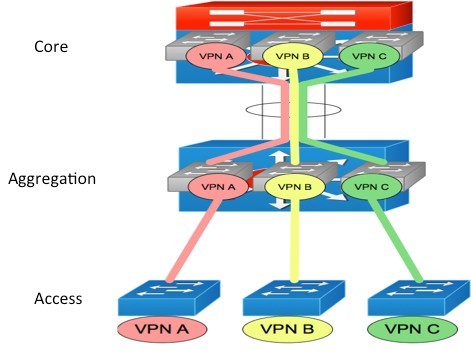Campus Network
Challenges for campus network
IT services are getting more and more complicated for enterprises today. As the base of various essential services, the corporate campus network is supposed to provide highly efficient and reliable transmissions of business data and satisfy the continuously-changing needs of business development. Although the traditional three-layered campus network with zoning and dual-homing architecture is highly reliable and scalable, it is not adaptive enough to the continuously-changing access requirements. For that reason, flexible and controllable access and uniform managements are needed.
New-generation campus network solution
Inheriting the three layers, zoning and dual homing architecture of the traditional campus network, the new-generation campus network solution is also characterized by the new-generation network virtualization technologies, including horizontal and vertical virtualization technologies. The horizontal virtualization technology can simplify network architecture and improve the general performance, reliability and manageability of the network. The vertical virtualization technology can realize the safe isolation of different business data in transmission, flexible access, demand-based distribution of network resources and other features. The logic architecture of the new-generation campus network is as follows:

Figure 1 Diagram of Virtual Campus Network Logic Architecture
Horizontal virtualization
Horizontal virtualization is a technology that virtualizes multiple network units into one. With this technology, it is possible to horizontally integrate the campus network core layer, distribution layer and access layer and virtualize multiple units of redundant network equipment into one logic unit or virtualize multiple physical circuits into one logic circuit, hence simplifying network architecture and avoiding dwarfed network convergence arising from spanning tree, redundant gateway protocol and other layer-2 technologies. The logic diagram of horizontal virtualization is as follows:

Figure 2 Logic Diagram of Horizontal Virtualization
Vertical virtualization
Vertical virtualization is a technology that virtualizes one network into multiple networks. With this technology, it is possible to virtualize a whole physical network into multiple logic networks for the transmission of different business data and full utilization of network resources. It is also possible to make flexible arrangements according to different business requirements and realize effective and safe isolation. The logic diagram of vertical virtualization is as follows:

Figure 3 Logic Diagram of Vertical Virtualization
Conclusions
A virtualized campus network provides an integrated virtualization solution. It is foreseeable that the corporate campus network will become more flexible, reliable, safe and controllable through further integration and virtualization of corporate network resources. It is also possible to distribute resources according to actual business requirements and hence satisfy the continuously-changing business needs of the enterprise.
©Guangzhou Xinhua Times Data Systems Co., Ltd. 粤 ICP 备 09119233号-1





